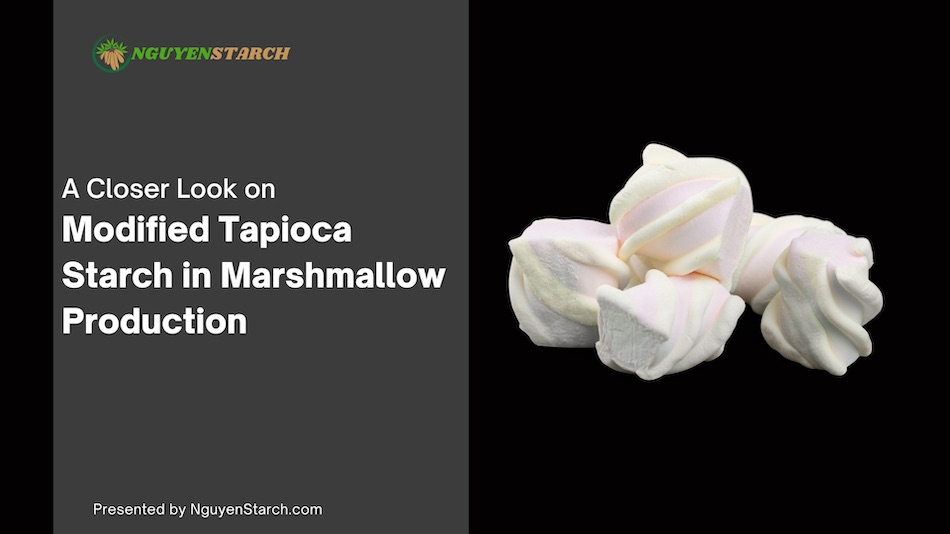Marshmallows are a delightful confectionery known for their soft, sweet, and airy texture. They are traditionally crafted from a mixture of sugar or corn syrup, gelatin, and egg whites, although modern variations may incorporate alternative ingredients to achieve the same consistency.
In the realm of food production, modified tapioca starch is a versatile player, offering an array of functional properties such as thickening, gelling, and stabilizing. When it comes to marshmallows, modified tapioca starch steps in to enhance both the texture and stability of these treats.
For specific applications, particularly in the creation of vegetarian or vegan marshmallows, modified tapioca starch can partially or entirely replace gelatin.
Benefits of Modified Tapioca Starch in Marshmallow Production
Using modified tapioca starch in marshmallow production offers several advantages, including:
Neutral Taste and Color: Modified tapioca starch maintains the original flavor and appearance of marshmallows, as it has a neutral taste and color.
High Water-Holding Capacity: Tapioca starch has the unique ability to absorb and retain substantial amounts of water, ensuring that marshmallows remain moist, soft, and retain their desirable texture without becoming dry and brittle.
Low Gelatinization Temperature: Tapioca starch has a low gelatinization temperature, reducing the risk of overheating during production. This feature results in a smooth and consistent marshmallow mixture.
High Viscosity: Its high viscosity allows modified tapioca starch to create a stable and thick gel, effectively trapping air bubbles to maintain the light and airy quality characteristic of marshmallows.
Gelatin Replacement: In the pursuit of vegetarian or vegan marshmallows, modified tapioca starch can replace some or all of the gelatin content.
Ways to Use Modified Tapioca Starch in Marshmallow Production
Modified tapioca starch can be utilized in various ways in marshmallow production to improve texture, consistency, and other characteristics. Here are some common ways to use modified tapioca starch in marshmallow production:
Dusting Starch: Post-cutting, a light dusting of modified tapioca starch prevents marshmallows from sticking together and imparts a glossy finish.
Binding Agent: Incorporating modified tapioca starch into the marshmallow mixture enhances cohesion and elasticity, reducing the need for gelatin while contributing to the desired texture.
Sugar Replacement: It can replace some of the sugar, reducing calorie content and sweetness, while altering volume and texture.
Texture Enhancer: Adding modified tapioca starch improves the overall texture, resulting in a smooth, elastic, and stable gel that defines marshmallows.
Moisture Retention: Its water-holding capacity keeps marshmallows soft and prevents them from drying out.
By skillfully employing modified tapioca starch, marshmallow producers can tailor their products to meet specific preferences and quality standards.
Types of Modified Tapioca Starches for Marshmallow Production
Different types of modified tapioca starch offer unique characteristics and applications in marshmallow production:
Distarch Phosphate (E1412): Produced by cross-linking starch using sodium trimetaphosphate or phosphorus oxychloride, this starch serves as a thickener, stabilizer, emulsifier, and gelling agent. It contributes to a creamy texture, stability, and extended shelf life, preventing the separation of liquid from the gel.
Acetylated Starch (E1420): Acetylated starch is obtained through the esterification of food starches using acetic anhydride or vinyl acetate. It acts as a thickener, stabilizer, binder, and texturizer. When used in marshmallow production, it enhances volume, crispness, chewiness, and reduces stickiness and moisture loss.

